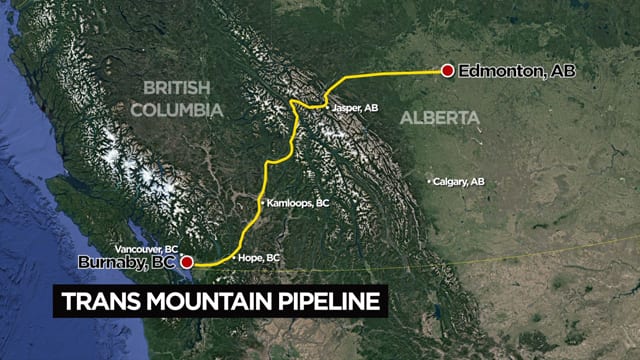The head of the Indian Resource Council says the multi-billion dollar Trans Mountain pipeline twinning project should go ahead despite a report suggesting it might not be needed.
“We have to educate ourselves more, we have to understand what pipelines are, and the regulations here in Canada,” says Stephen Buffalo, CEO of the council that advocated for Indigenous own oil projects. “In my view, its the safest way to move this natural resource. And there is a world demand.”
The report was issued Tuesday by the Canada Energy Regulator (CER) and projects the country’s energy usage until the year 2050.
According to the report, there are two main paths being projected.
One path, called the Reference Scenario, assumes there are no more environmental policies put in place and oil demands continue to increase.
The second, the Evolving Scenario, was calculated with the idea that more environmental policies are introduced such as additional carbon taxes and improved technology from the oil sector.
The report also shows in a graph that once the Enbridge Line 3 is fully operational, there could be enough pipeline capacity to carry all the oil needed in the year 2039 – making Keystone and Trans Mountain pipelines redundant using the Evolving Scenario.
“In the evolving scenario, which is the one we see a continued pace of action on climate change and improving technology in the area of low carbon tech, you do see some years where there is a significant amount of capacity over and above what would move out of that area,” said Darren Christie, chief economist for the CER.
The Trans Mountain pipeline is a 1,150 km twinning of the existing pipeline that runs from Edmonton, Alta. to Burnaby, B.C.
The federal government purchased the existing line in 2018 from Texas-based Kinder Morgan for $4.5 billion when the company threatened to walk away because of the uncertainty. The project cost is now over $12 billion.
A number of First Nations along the route in British Columbia are opposed to the project fearing a spill and the environmental damage that comes with it. Others oppose the continued extraction of fossil fuels.
According to the CER, in the projected Reference Scenario, the current environmental policies and continued oil demand, then both the Keystone and Trans Mountain pipelines would be needed.
The report does not say which is the more likely scenario.
Read More:
Trans Mountain Pipeline project
Michael Lebourdais is one of the heads of the Western Indigenous Pipeline Group. It represents several Indigenous nations that want a stake in the Trans Mountain pipeline.
He said the demand for oil is there today and will be down the road for Alberta.
“Today, we are building the pipeline. We do have buyers for Alberta oil once it gets to tidewater. I’m a big fan of reducing pollution, heck yea, let’s reduce the heck out of pollution. However, our oil seems to be a lot cleaner than what is currently used in the markets. And there should be a larger demand, a higher demand for cleaner, Canadian oil,” he said.
Lebourdais says this report will not stop his group from investing in the Trans Mountain project.
“You tell them, I’ll take it off their hands, sell it to me, sell it to me,” he said. “That’s your headline. Sell it to me. If it’s not necessary, sell it to me. I will take that lemon off the Canadian taxpayer’s
hands.”
The report also estimates that in 2050, two-thirds of Canada’s energy will still come from oil.










